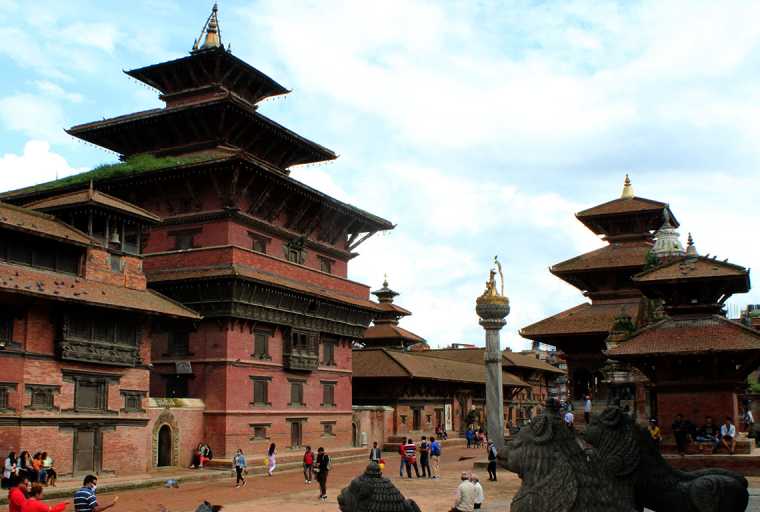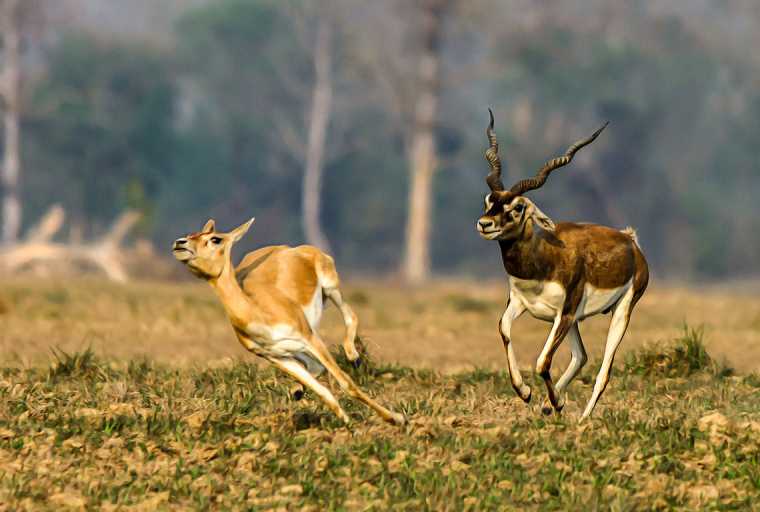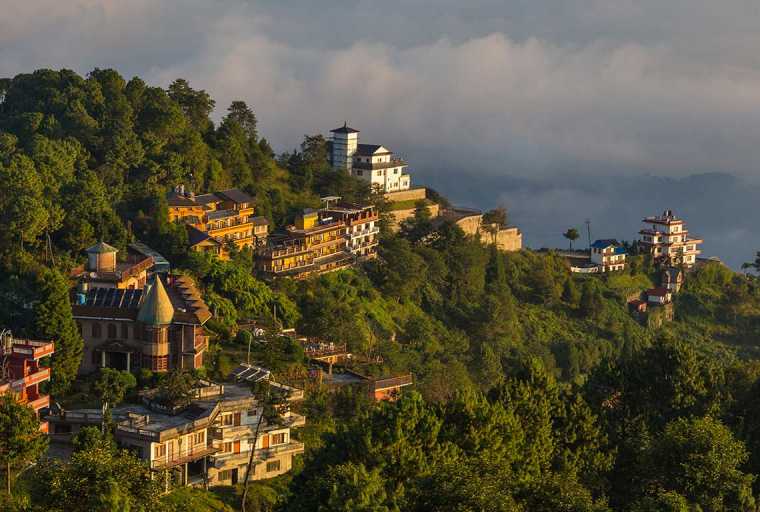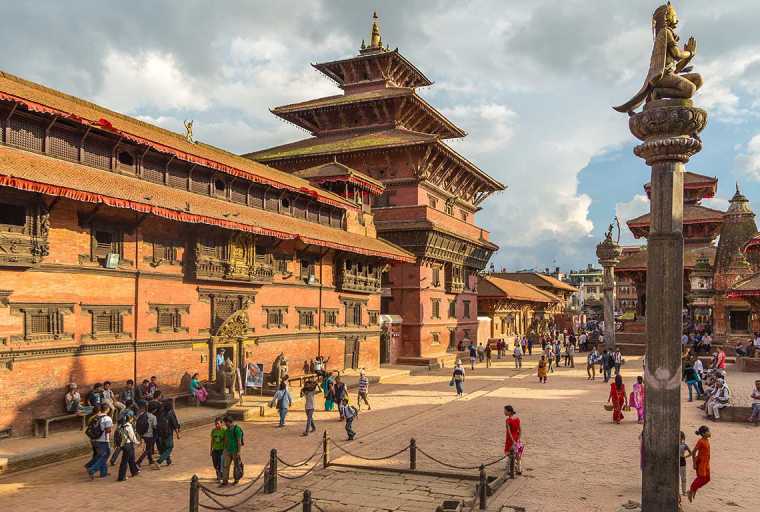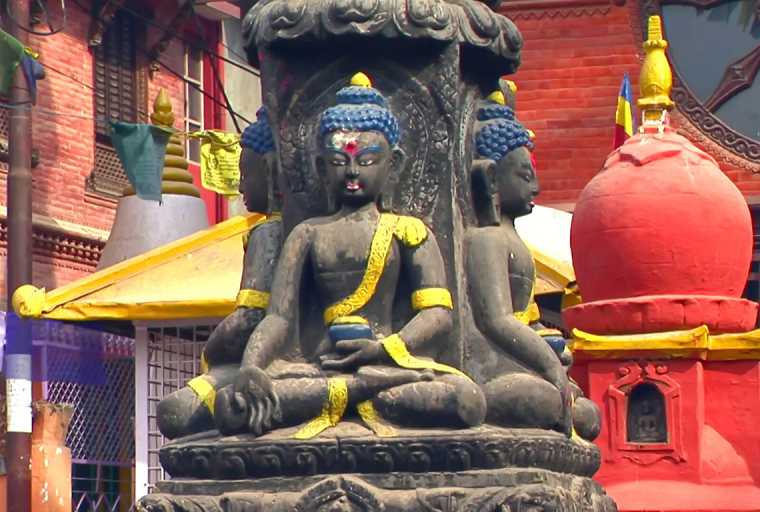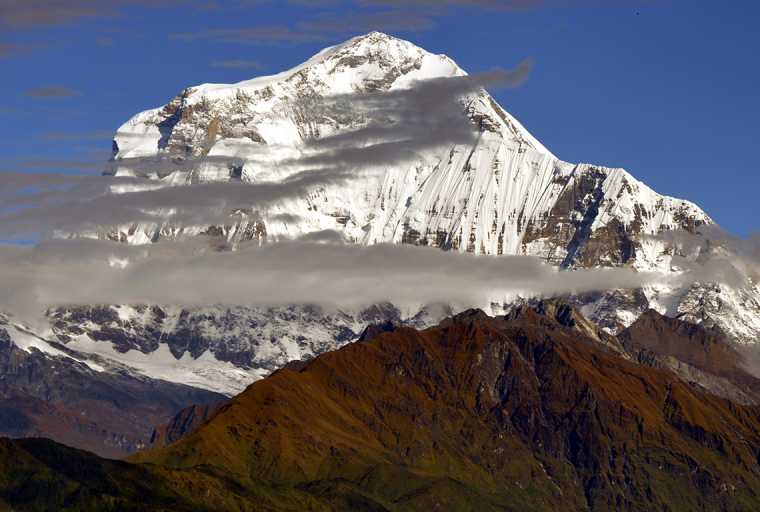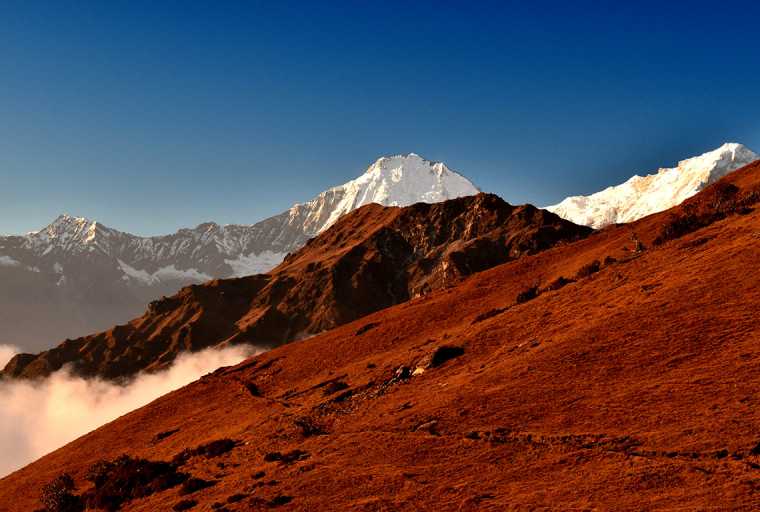Shey Festival 2024
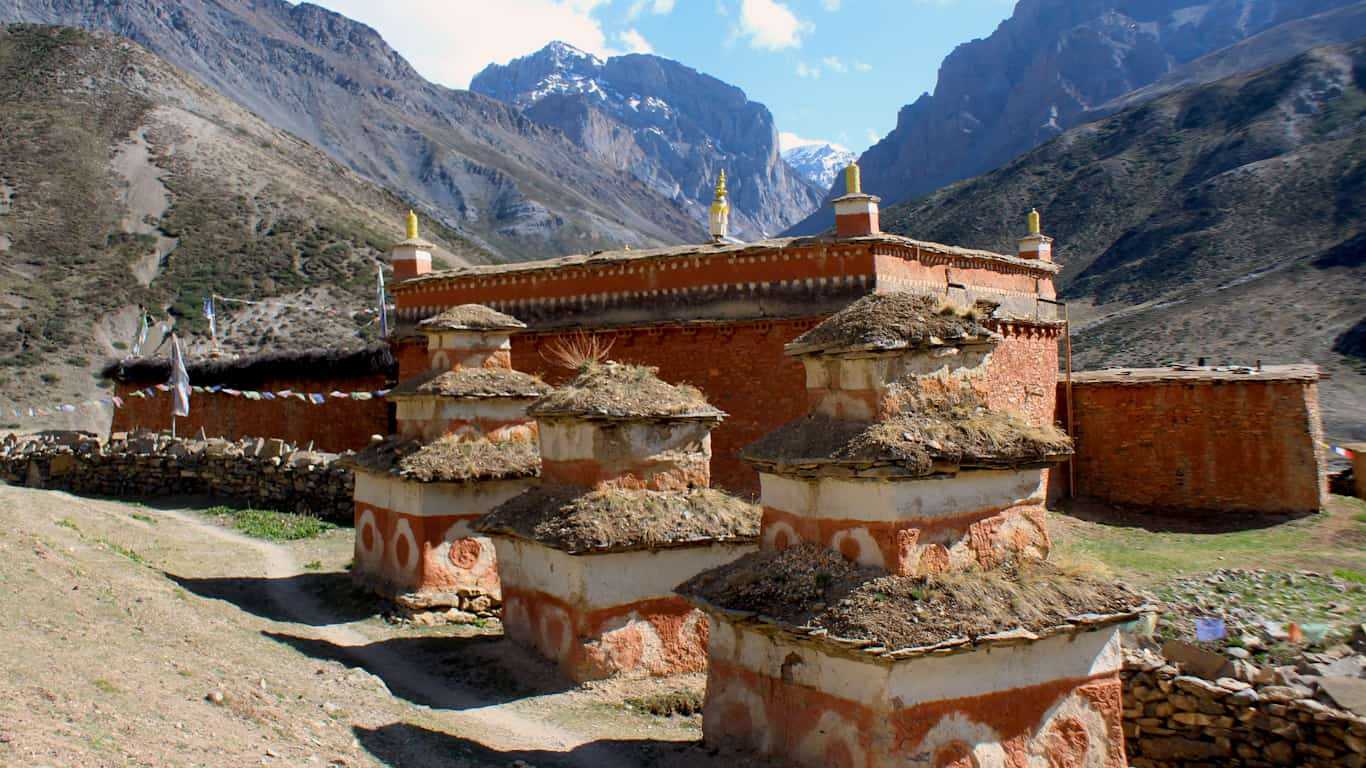
Who here's caught wind of Comet Halley? This cosmic celeb, aka "Halley's Comet," is like the rock star of periodic comets visible from our cozy Earth. It struts into our cosmic spotlight roughly every 76 years. The last time it graced us with its tail feathers was in '86. So, mark your calendars because it's planning a dazzling comeback around 2061—missing out on six Shey festivals!
Unlike this comet, you can't just choose to make a comeback 76 years later. So, grab your backpack, and hop on an airplane to witness the majesticity of- Drum rolls- The Shey Festival!
This cultural occasion honours Tibetan Dragon Year and is held once every 12 years during August. In Upper Dolpo, various customs are followed to celebrate this festival, with the tradition remaining unchanged. The objective of the Shey Festival Trek in 2024 is to showcase the true essence of the Shey Festival held in the magnificent crystal mountain, providing visitors with a unique and enriching experience of its remarkable offerings.
The Shey Festival is a highly significant celebration in the upper regions of Dolpa, Nepal, retaining its unique importance with the code. The festival is primarily observed by the residents of Shey Gompa and is highly revered by followers of Buddhism. It occurs once in every 12 years, specifically during the dragon year of the Tibetan calendar, The festival is connected to the religious importance of the crystal mountain.
During the festival period, attendees walk around the crystal mountain while expressing their wishes for positive well-being and a joyful existence within their surroundings. This festival usually occurs in August, with the number remaining unchanged. Many individuals familiar with the isolated mountain valley and its importance partake in this splendid celebration, appreciating the unique and hidden culture of Dolpo.
Most of the population in the Dolpo region adheres to the Bon religion, which is an ancient indigenous religious practice of Tibet. The Bon attributes closely resemble the practices found in Tibetan Buddhism. The majority of people living in the upper regions of Dolpo have either migrated from Tibet or have been living there with a significant influence of Tibetan cultural practices. So, mostly, the culture of the Dolpo area remains untainted by external influences because of its close proximity to Tibet and its isolation from the rest of the world. The Shey Festival holds significant historical and cultural value in the Dolpo region, and it is cherished as a precious heritage. remains unchanged. According to the tale, a mystic hailing from Tibet called Dhuptop Singhe Hyese successfully defeated the malevolent spirits and demons of Crystal Mountain (also known as Shey Rivo Drukta by riding a snow lion. He then established a monastery named Shey and initiated the tradition of walking around the revered Crystal Mountain.
Since the twelfth century, a celebratory event commemorating his victory over malevolence has taken place every twelve years, specifically in the Year of the Dragon. This festival attracts individuals from both neighbouring and distant locations to Shey. The Shey Gompa is located within the Shey Phoksundo National Park.
The Shey festival is an exceptional cultural opportunity and is highly valued. It happens once every twelve years when the year of the dragon arrives according to the Chinese calendar with remaining unchanged. In various parts of the world, every year is associated with a specific animal that holds significant significance during religious pilgrimages. Every passing year brings along a unique animal that is honoured and a pilgrimage to a distinct shrine. remains unchanged. Finally, after a span of 12 years, it is time for the Dragon to take the turn, which will be marked by a joyous festival held at Shey Gompa in Dolpo.
Location
Shey Gompa is located within the Shey Phoksundo Rural Municipality of Upper Dolpo in Nepal, standing proudly at an altitude of 4200 meters above sea level. The Shey Gompa holds great significance as a sacred destination in the Dolpo area, receiving reverence from both Buddhists and Bonpo practitioners. In the 11th century, Shey Gompa was established by Drotob Senge Yeshe, a Tibetan Buddhist monk, who successfully subdued a powerful mountain spirit in the region. Vibrant artworks, ancient Thangkas, sculptures, and written documents dating back to the construction of Shey Gompa depict the importance of Crystal Mountain as well as the presence of a milky lake in that area. The mountaintop above Shey Gompa is famously called Crystal Mountain. Buddhist visitors who come to this place engage in a kora circumambulation around the hill, dedicating a lengthy and exhausting day in pursuit of religious merits. The most sacred peak on the planet, Mount Kailash in Tibet, is observed during the crystal mountain pilgrimage known as the Kora. During the complete lunar cycles of July to August, the people residing in Dolpo and neighbouring regions gather together at this location to form a circle around their illustrious Crystal Mountain. The Dolpopas, also known as the People of Dolpo, initiate their harvest activities following the circumambulation ritual. If you plan to visit during the full moon days in July and August, it is recommended that you stay for three days and arrive a day earlier than usual, just like the locals. Don't forget to keep the number as it is.
Around Shey Gompa, approximately six houses are dyed with a reddish hue, symbolizing that Shey is a monastery rather than a regular village. This sacred location has a rich history that traces back to ancient times, and the tradition of venerating the crystal mountain remains intact in its most exquisite manifestation. The festivities in this distant region are incredibly amazing, and numerous individuals who are aware of the celebrations come to Shey Gompa in August to experience the magnificent festival first-hand.
What is Shey Festival?
The Shey Festival has a rich history that dates back many years. It is a cultural event that holds great significance and is celebrated with enthusiasm by the local community. The festival has a unique and captivating aura that captivates both locals and visitors. The traditions, customs, and rituals associated with the festival have been passed down through generations, making it an important part of the region's heritage. The Shey Festival offers a platform for people to come together, connect, and celebrate their cultural identity.
During the year 1220 BS, following the arrival of the Kagyu tribe, it is commonly believed that this festival came to represent the triumph of righteousness over malevolent spirits, with the numerical symbol remaining unchanged. The Shey Festival, which occurs every 12 years, holds immense religious importance and attracts numerous pilgrims and tourists. In the dragon year, the Shey festival is celebrated, during which people participate in the worship of the esteemed crystal mountain. This mountain is sometimes likened to the renowned Mount Kailash.
Shey Gompa symbolizes the Crystal Monastery, standing firm with its unique name. The Shey mountain, famously referred to as the crystal mountain, holds great spiritual significance for Tibetan Buddhists. Many individuals visit this location annually to perform the ritual of circumambulation and pay their respects to the majestic crystal mountain. The festival linked to Shey Gompa is commonly referred to as 'Shey Ribo Druk Dra'. This name derives from the words Shey, which signifies Crystal, and Ribo Druk Dra, which translates to Mountain of Thunder Dragon. In that perspective, crystal mountain holds the reputation of being the most sacred and celestial dwelling place of deities. The festival occurs once every twelve years. So, witnessing this festival is a very unique and special experience. The festival is celebrated by everyone in Dolpo, without exception.
In the Shey Gompa, the people from the community partake in the festival, eagerly observing the religious rituals. The crystal mountain holds a paramount status as the most important pilgrimage destination in the Dolpo region. The power of the mountain is perceived to be immense, so much so that individuals both within and outside of Dolpo participate in witnessing the celebrations in Shey. The impressive religious devotion and enthusiasm towards worshipping the crystal mountain are highly noticeable among the visitors. Currently, witnessing the festival in the remote community is not just a significant aspect of discovering the distinct culture, but it also serves as a noteworthy testament to how the festivities have originated and the determination to engage in such a dry setting regardless of minimal acknowledgment of environmental obstacles.
The fact that the people of Dolpo continue to uphold and preserve their cultural heritage is a clear indication of the diverse cultural influences that coexist harmoniously among the various groups of observers. There are numerous stories surrounding the Shey Gompa, alternatively referred to as Crystal Mountain, and countless writers have endeavoured to incorporate it into their accounts of Dolpo, offering invaluable perspectives on the festival.
Where is it celebrated?
The Shey Festival is held in the location below the Kang la Pass, situated at approximately 4200 m above sea level, you can find the Gompa of Shey. It is commonly known as the crystal mountain in Tibetan. The Gompa is a red-coloured two story building. There are numerous Buddhist artworks displayed within the confines of the Gompa. This stunning spot can be found in the Karnali region, which is Nepal's most remote and geographically difficult area, situated in the northwest part of the country.
In order to explore the Upper Dolpo area, one must journey through challenging and untamed landscapes, often straying from established routes, for several days, without any shortcuts.
When is the Shey Festival celebrated and how long does it last?
The Shey festival, which occurs every 12 years, takes place in the month of August. In Upper Dolpo, the presence of the people is strongly felt during this Buddhist celebration, as the prominent Buddhist monks partake in the festivities. The organisers have formulated plans to arrange the Shey Festival Trek in 2024, where visitors will be treated to a mesmerizing celebration alongside an unparalleled adventure through the untouched terrain of the majestic mountains.
The Dolpo region has maintained its isolation for an extended period. . It is a significant occasion for the Dolpo community and is observed by adherents of the Bon Po tradition. The festival is commonly observed in August, specifically during the full moon in the Dragon Year following the Tibetan Calendar, and it is customary to the region. The Festival is joyously observed over a span of five consecutive days.
The History Of Shey Festival
The Shey Festival has a rich historical background, dating back centuries. It has been celebrated in a traditional manner, with various cultural activities, rituals, and performances. It is a significant event that holds great importance in the region's history and heritage. The festival has witnessed numerous changes and developments over the years, but its essence and spirit have remained unchanged. The Shey Festival, also known as the Festival, continues to be a cherished tradition, attracting locals and tourists alike, who gather to witness and participate in its unique celebrations. In the Kagyu Sect, Shey Gompa is a monastery that was founded in the 11th century as a deviation from the Nyingma tradition's Kalachakra Tantrism. The Nyingma sect was the first to reach the Shey Gompa region, predating the arrival of the Kagyu sect. In Tibet, Kalachakra is claimed to have held a position of power during the same century. The idea of Kalachakra originates from Tantra practices and serves as a method to transcend the limitations of mortal time. It is believed to encompass both profound wisdom and is associated with the depictions of the Bodhisattva known as Manjusri. In the Kalachakra, both peaceful and wrathful forms of the Buddha aspects are combined, leading to the perception of the deity of compassion, Avalokita, also embodying the fierce manifestation known as Mahakala. The Kagyu, Sakya, and Gelug sects of Tibetan Buddhism experienced significant transformations under the leadership of the Dalai Lamas in the 16th century, resulting in their emergence as powerful forces within the religion. As a result, the Kagyu Sect, which was established by the esteemed Lama Marpa, received teachings from Naropa of India and subsequently imparted the Dharma to Milarepa. The ascetic practices of Gelung pa and their impact spread even to distant places like Crystal Mountain with a highly diverse influence.
The fusion of Karma pa practice is the same as Zen, as both prioritize intuitive experience over priestly ritual and doctrine. Some literature surrounding this extraordinary tale indicates that the Crystal Monastery, also called Shey Gompa, is associated with the Zen Sect, and the Lama of Shey is highly respected across Dolpo as the current reincarnation of the esteemed Lama Marpa. The Shey Festival was initiated to celebrate the triumph of righteousness over wickedness. This event is commemorated every 12 years, filled with great excitement by Buddhists.
In 2012, there was a celebration that took place after the year 2000. In the year 2024, the Shey festival will be joyfully observed for the 65th consecutive time. Can you believe that?
The crystal mountain beautifully emits positive energy, symbolizing the eradication of evil during this significant festival.
What is the purpose of organizing the Shey Festival?
The celebration symbolizes the triumph of good over evil, kindness over harm, and wisdom over foolishness. It is an occasion that occurs once every 12 years and is commemorated by the Dolpo community. Many individuals from various parts of the globe also visit this location to discover and experience the festivities, with the number remaining unchanged. The celebration of this festival in this particular area is distinctive and serves as a notable event commemorating the Year of the Dragon. The Shey Festival in Dolpo is a traditional event that takes place in Dolpo, a region known for its unique culture and stunning landscapes. This festival, known as Shey, has deep cultural and religious significance for the local community. It is celebrated annually and attracts people from far and wide to participate in its colourful and vibrant festivities. The Shey Festival showcases traditional dances, music performances, mask dances, and other cultural events that reflect the rich heritage of Dolpo. It is a time of joy, unity, and spiritual reverence as people come together to honour their ancestors and seek blessings for prosperity and well-being.
The festival also serves as a platform to promote tourism and cultural exchange, providing visitors with the opportunity to immerse themselves in the vibrant traditions of Dolpo. With its unique customs, breath-taking scenery, and the enthusiasm of its people, the Shey Festival in Dolpo is a must-see cultural extravaganza that truly captures the essence of this enchanting region. In the Dolpo region, the Shey festival takes place every twelve years during the month of August, which coincides with the Dragon year in the Tibetan calendar. In the realm of Tibetan Buddhism, the gathering known as is a significant occasion that brings together not only Tibetan Buddhists but also the people residing in Upper Dolpo.
Major Attractions
Major Attractions of Shey Festival include a wide range of cultural activities and traditional performances. The festival showcases the rich heritage and vibrant culture of the region, with numerous events and festivities taking place throughout. Additionally, the festival is known for its lively music and dance performances, bringing together locals and tourists alike. The festival also provides an opportunity to witness traditional art forms, such as thangka painting and mask dances, which are intrinsic to the region's cultural identity. Overall, Shey Festival is a captivating celebration that offers a unique insight into the cultural tapestry of the area.
The Unique Terrain:
In Upper Dolpo, there are numerous captivating elements connected to festival festivities, with being an intrinsic part. Unique exposure to understanding the cultural aspect of the locals and arid mountain valleys, coupled with the breath-taking natural scenery, makes the journey incredibly stunning.
The Trekking Experience:
The Shey festival trek is an incredible journey through the Upper Dolpo region of Nepal, providing an opportunity to discover the untapped beauty of the rural mountains. Upper Dolpo, situated in the Himalayan range of Nepal, is an elevated valley known for its high altitude.
The Tale of Evolution:
The valley is situated at a height of 5,000m 16,400ft above the sea level and served as the habitat for some of the earliest human communities on the planet. Upper Dolpo's extraordinary pebble stone dwellings serve as evidence of human habitation in this area for countless centuries, rendering it an invaluable repository of cultural riches.
The Forbidden Kingdom:
The Upper Dolpo region remains secluded and mostly unaffected by contemporary advancements, preserving its cultural allure. The majority of the population in the area Tibetan, while a few communities still converse in their native language known as Tibetan Bon. The allure of the area has been significantly altered by the influx of visitors, who have started converging in large numbers over the last twenty years. The locals are currently experiencing a cultural shock as they attempt to adjust to evolving values and ways of life. remains as is. However, the cultural values of the Dolpo people remain unchanged and are faithfully adhered to their culture.
The Culture:
The culture of the indigenous people is heavily impacted by the deep integration of traditional Tibetan Buddhism in their daily routines and various agricultural practices. Locals possess an exceptional approach to commemorating festivals, creating melodious sounds, crafting and building homes, and honing their pottery skills, all yielding a distinctive cultural essence.
The Surroundings:
Dolpo, located to the west of the Annapurna mountain range, is a district situated in the northwest part of Nepal.
It is situated on the shores of the Karnali river and its altitude fluctuates between 2800 and 5500 meters. The Dolpo region in Nepal is renowned for being one of the most secluded areas. Dolpo, with its rich history, has served as a sanctuary for Tibetan exiles seeking refuge from China's military enforcement in the 20th century, a significant event symbolized by the . The Tibetan culture in that region became more strongly linked to Tibet in exile rather than Nepal, consequently. The geography of Dolpo is characterized by its semi arid condition, which is attributed to its trans Himalayan features.
Shey Phoksundo National Park:
Shey Phoksundo National Park, famous for the lake Shey Phoksundo, is situated in the western part of Nepal, adjacent to the Chinese border. The main motive behind its creation was to offer a safe haven for animals frequently targeted by humans in hunting activities, with intact. The vast majority of the park's area, measuring 3,555 square kilometers, is characterized by a thriving forest where an abundance of plant life thrives. Additionally, certain areas within the park boast an impressive count of more than 286 distinct plant species. However, what truly sets this park apart is the remarkable level of biodiversity it harbors. Shey Phoksundo National Park is home to a rich diversity of wildlife, including 200 different bird species, over 29 types of butterflies, and a variety of endangered animals such as the snow leopard, grey wolf, musk deer, blue sheep, goral, great Tibetan sheep, Himalayan tahr, leopard, jackal, and Himalayan black bear. Phoksundo Lake, known as one of Nepal's most beautiful lakes, boasts stunning azure blue waters. It is situated at an altitude of 3,589 meters above sea level in the Dolpa district of Nepal, known as .
Phoksundo Lake:
Hikers who visit this lake often describe this small paradise as the most stunning spot on the planet, nged. Shey Phoksundo Lake covers an approximate area of 1.91 square miles with a maximum depth reaching 145 meters. . In the realm of Nepal, it stands as not only one of the deepest lakes but also as the highest altitude lake on Earth, with the number remaining unchanged.
The Biodiversity:
Monsoon vegetation plays a significant role in the trekking experience and should be thoroughly explored. remains unchanged. The Shey Phoksundo National Park is truly breathtaking with its lush greenery and vibrant atmosphere, always bustling with life and beauty. Since the festival takes place during the rainy season, you will have the opportunity to observe a diverse array of lush vegetation and attractive flowers along the route. However, at higher elevations, the geography of Phoksundo is primarily characterized by arid landscapes. As a result, there may be less diverse flora compared to the lower regions.
The Panda of Nepal:
Snow Leopard In the spot of snow, as the Lamas present salt offerings to the Blue Sheep, the Snow Leopard's main prey, and as the sheep approach to lick the salt, there might be a rise in Snow Leopard sightings during this time.
Yak-Tracks Yak caravans, with the number intact, embark on a journey to Tibet during this particular season for the purpose of engaging in salt trading. It is a wonderful opportunity to spend quality time with them at this moment.
Mountaineering in Dolpo
For many of the visitors all over the world think that trekking and planning their trip to Dolpo is hard and more complex to organize. There are very less people who see some interesting climbing opportunities in Dolpo Region.
Did you know the easiest 7000 meters summit in Nepal?
Putha Hiunchuli (7246m) is the easiest 7000 meters peak which is located in Dolpo Region. There are other peaks which are below 7000 meters such as Mukut Himal (6087m), Norbu Kang (6085m), Mariyong (6528m), Swaska Kang (6405m), Kade Hiuchuli (6627m), Kanjiroba North (6313m) and Kanjiroba South (6883m). Due to the very least visitors there are many peaks which are unnamed and virgin.
The Treatment: Home Version
Exhibition of Local Medicine The sole provider of healthcare remains Amchi, the traditional physician of the community. During this celebration, there will be a demonstration showcasing the steps followed in creating medicinal items and delivering healthcare services.
The Shey festival also presents activities such as horse racing, competitions in archery, and festivals celebrating local cuisine. remains unchanged.
Different Treks in Dolpo Region
Dolpo is the biggest district of Nepal where you can do many treks Lower Dolpo Trek
Inner Dolpo CircuitTrek
Inner Dolpo trek is combination of both lower and Upper Dolpo trek. It takes 25 days from the Kathmandu to Dolpo and return to Kathmandu. Those trekkers who are fit and want to explore Dolpo at single time then this trek is recommended. This trek is possible only by camping style trek where you will cross high passes and experience the Holy Shey Gompa, Phoksundo lake, and old villages like Dho Tarap, Saldang, Tinje,etc.
Shey Gompa pilgrimage
Shey Gompa Pilgrimage tour is our spiritual trip in Dolpo. This trek is make for spiritual seeker where you will visit Both Bon and Buddhist Pilgrimage sites such as Monasteries, Shrines and Crystal Mountain. Explore the Tibetan culture that remain in the high altitude of Northern Nepal. This trek includes western parts of Dolpo. Helicopter Tour to Dolpo
Riding a helicopter to Dolpo is a luxury Tour in Nepal. This tour is suitable for those who are not fit enough to trek all the way to Dolpo or his/her time doesn’t permit. This tour is Customizable as per your interest.
Phoksundo Trek
This trek can be done in both ways camping and tea house style. This trek require 9 Days from Kathmandu. The main attraction of this trek is the lake itself, Phoksundo Tal. The beauty of this lake had lured heart of all visitors. From the morning till evening its color keep changing and looks amazing.
What is the duration of the Shey festival?
The festival typically spans a period of approximately five days. Various celebrations are arranged. remains unchanged. The festival is known for its captivating ritual performances conducted by the priests and cultural displays carried out by the local followers, which serve as significant draws for visitors. The performance of the Crystal Mountain's kora is also carried out by enthusiastic individuals. The significance of the five days is paramount,
When To Pack the Bags?
The Shey festival trek is scheduled to take place in the year 2024. The festival dates have not been determined yet. It is ultimately determined by the Buddhist experts who then choose how the ceremony will be carried out. If you plan to attend the astonishing festival, keep checking the Google, it will be posted there.
Step by Step Guide- How to Get there?
The Shey festival trek involves embarking on a voyage to Shey Gompa located in the Upper Dolpo region. The focal points of the journey revolve around the crystal mountain, embracing both its exploration and the ceremonial acts associated with it. However, during the course of events, you will have the opportunity to discover a plethora of attractions in the Dolpo region. The following itineraries recommend the top methods to discover the Shey festival and the associated Dolpo region.
Itinerary I–
On the first day, you will arrive in the city of Kathmandu.
On the second day, you embark on a sightseeing tour of Kathmandu.
On the third day,you will embark on a journey to Juphal by flight and then continue our trek to Kagni.
On the fourth day of our journey, you embarked on a trek towards Rechi.
On the fifth day, you will embark on a trek to Ringmo.
On day sixth, you will spend the day exploring Ringmo
On Day seventh, you will take Journey to Forest Camp on foot.
On the eighth day, you embark on a journey to reach the High Camp.
On the ninth day of our journey, you embarked on a trek towards Shey Gompa.
On Days, 10-13 you will be delving into the Exploration of Shey Gompa.
On the fourteenth day, embark on a journey to Namgung,
On the fifteenth day, embark on a journey to Saldang.
On the 16th day, embark on a journey to Chore Gaun.
On the seventeenth day, we embarked on a trek towards Zangla BC.
Day 18 Hike to Dho Tarap.
On the nineteenth day, take a helicopter to travel to Kathmandu.
On the twentieth day, it is time to leave.
Itinerary – II
On the first day, we reached Kathmandu as scheduled.
On the second day, explore the sights of Kathmandu.
On the third day, we will embark on a journey to Juphal and commence a trek to Kagani.
On the fourth day, we will embark on a journey to Rechi.
On the fifth day, we embark on a journey to reach Ringmo.
On the sixth day, our expedition continued with the exploration of Ringmo.
On the seventh day, we embark on a trek towards the Forest Camp.
On the eighth day, we will embark on a journey to reach our high camp.
On the ninth day, we embarked on a trek towards Shey Gompa.
On days 10 to 13, we will be exploring Shey Gompa.
On the fourteenth day, return to Kathmandu via helicopter.
On the fifteenth day, it is time to leave.
The Money Talks:
The cost of the Shey Festival Trek remains at moderate. The Shey Festival Trek aims to offer trekkers an opportunity to partake in a unique festival that occurs only every twelve years, while keeping the essence of intact. Due to its secluded location, the expenses associated with the hike are significantly increased. However, remains an alluring destination for adventurous individuals seeking to experience this extraordinary festival firsthand. The expense of the journey is on the steeper side because of the inclusion of helicopter flights and other pricey accommodations in a remote and secluded location. The price of the Shey festival trek may appear to be quite steep. There are multiple reasons why the journey is expensive. . The trip cost is elevated due to various factors such as the restricted area permit, helicopter flight, camp arrangements, and other logistical preparations. During this journey, you will embark on a trekking adventure but, after exploring Shey Gompa, you will conveniently return to the Kathmandu valley by helicopter. This enhances the journey by reducing its duration and adding increased significance.
How much does it cost for Dolpo trek Package?
The cost of trekking in Dolpo depend on many aspects like duration, facilities, means of transportation, crew members, number of trekkers in a group, etc. Trekking in Dolpo region are more expensive than other regions of Nepal because 80 percent of the area can be visited only with the camping trek and in addition to that restricted permit is expensive. Check below in the table of cost breakdown for Dolpo treks.
What are the permits required for Dolpo Trek
This is considered a controlled area that requires a special permit which is very expensive as compared to Annapurna and Everest regions. This is an ultimate trekking destination for those who adore culture and a less crowded trekking route or are done with all trekking in Nepal and still looking for a more rewarding trip. Following permits are necessary for Dolpo Trek except for the TIMs Card which is not compulsory in all restricted trekking areas of Nepal.
Trekking in Upper Dolpo require following permits:
Upper Dolpo restricted permit that cost USD 500 for the first 10 days and for the additional days USD 50 per person per day.
Shey Phoksundo National Park Entry fee of USD 30 for Foreigners, NPR 1500 for SAARC nationality and NPR 100 for Nepali visitor. It is one time permits for unlimited travelling.
If your trekking itinerary start and finish at Dunai or Juphal then you also need two weeks permits of Lower Dolpo which cost USD 20 per person per week.
Monasteries entry fee differ from one monastery to other between NPR 200-400 per person. You will need to pay during your visit at monastery.
Trekking in Lower Dolpo require following permits:
Shey Phoksundo National Park Entry fee of USD 30 for Foreigners, NPR 1500 for SAARC nationality and NPR 100 for Nepali visitor.
If your trekking itinerary start and finish at Dunai or Juphal then you also need two weeks permits of Lower Dolpo which cost USD 20 per person per week.
Monasteries entry fee differ from one monastery to other between NPR 200-400 per person. You will need to pay during your visit at monastery.
Top Tips for Dolpo Trekking
- The earlier you visit Dolpo, it will be more rewarding trip. Who knows whether the present tradition, lifestyle, culture and its natural beauties remain same as it or not.
- Trekking in Dolpo isn’t easy as other trekking destinations of Nepal. So, proper clothing and gear are essential.
- Staying healthy during your trekking days is a key to success your trip. So, take more hot drinks and eat well.
- Acclimatization is necessary for trekking in Dolpo as you are walking in the high altitude mostly 4000 meters. Always flexible with your itinerary and keep spare for rest.
- Don’t forget to choose the best time to visit Dolpo as per your interest of field.
- Choose local trekking agency. Locals have the direct link with local people.
- You must have your own travel insurance which cover helicopter rescue because chartering a chopper is the best and quickest way to rescue in the mountain.
- Don’t set off without your permits. If you are traveling without permits and the checkpoint officer noticed you, then are forced to pay the cost of permits and return to Kathmandu without entering the Dolpo.
- Take your Passport and copy of your insurance.
- Hire an experienced guide who have good knowledge of Dolpo.
- Don’t forget to tips your crew members because they never ask for it directly. If you don’t have an idea how much to tip. Normally tips are 10 to 15 % of their wages.
Packing List For Trekking In Doplo
Trekking gears
What you need to pack will depend on the time of year you choose to trek, the duration of your trek and how high you will reach. The variation in altitude, temperature and your personal needs should be taken into account while packing for your trip. We want you to understand that you won’t be needing all the items listed below.
We recommend you to do a little research on your own and check for the day-to-day temperatures and weather patterns and pack accordingly. Trust us, it will save you a lot of space in your luggage and extra baggage fee by being prudent and using a little bit of common sense.
The weight limit for your luggage while trekking is 33 pounds or 15 kg. Your luggage will be carried by your porter but you are required to carry a day-pack (with your valuables or anything important) on your own. You can leave your spare luggage (items which you don’t need for the trek) at your hotel. Every hotel in Kathmandu offers locked storage which is completely safe and free. But make sure that you lock your luggage properly before giving it up for storage.
The list given below is just a guideline to help you pack for your adventure. Most of the items can be hired or bought in Kathmandu. There are many shops in Thamel selling branded as well as locally made trekking gear and equipment.
Important Documents And Items
- Valid passport, 2 extra passport size photos, airline tickets
- Separate photocopies of passport, visa form (easily obtained at Tribhuvan International Airport, Kathmandu), proof of insurance
- Dollars, Pounds or Euros in cash for purchasing Nepalese visa at Kathmandu airport, for paying for restaurants and hotels, for gratuities, snacks, and to purchase your own drinks and gifts
- Credit cards, Bank/ATM/Cash machine cards for withdrawing funds from cash machines (bring a photocopy of your cards), traveler’s checks, etc.
- Nepalese currency while trekking to buy snacks and other items en route
Packing List For Trekking
Head
- Bandana or headscarf, very useful for dusty conditions
- Balaclava that covers your ears – Needed only for a winter trek or for +3000m treks
- Beanie
- Wide-brimmed sunhat
- Neck gaiter or warmer
- Headlamp with extra batteries and bulbs
- Sunglasses with UV protection
- Prescription sunglasses (if required)
Upper Body
- Long sleeve shirts
- T-shirts
- Lightweight thermal tops
- Fleece wind-stopper jacket or pullover
- Waterproof (preferably breathable fabric) shell jacket
- Down Vest – Only for winter or high altitude (+3000m) treks
- Down jacket
- Gore-Tex jacket with hood, waterproof and breathable
- Hands
- A pair of lightweight poly-liner gloves or lightweight wool or fleece gloves.
- A pair of mittens, consists of 1 Gore-Tex over mitt matched with a very warm polar-fleece mitt liner (seasonal)
Lower Body
- Non-cotton underwear briefs
- Hiking shorts and hiking trousers
- Lightweight thermal bottoms
- Fleece or woolen trousers/ waterproof shell pants, breathable fabric.
- Feet
- Lightweight inner socks, heavy poly or wool socks and cotton socks
- Good quality hiking boots (sturdy soles, water-resistant, ankle support, “broken in”)
- Running shoes and rubber sandals/flip-flops
- Gaiters and crampons – Needed only if your trek involves walking on snow or ice
Sleeping
- Sleeping Bag – The type of sleeping bag you carry will depend on where and when you choose to trek. For treks up to 3000 metres, a lightweight 2 season (ideal for 5°C to 0°C) sleeping bag will be good enough. If you are not too finicky about using the blankets in teahouses, you can skip carrying the bulky sleeping bag altogether. You can carry a liner and layer the blanket over it. If you feel cold, you can wear your warm clothes to bed or request for extra blankets.
- For high altitude (+3000m) treks, where nighttime temperatures dip well below the freezing point, a 4 season (suitable for low temperatures up to -10°C) sleeping bag is a must. If you are planning on a high altitude trek during winter, you may even need a 5 season sleeping bag.
- Sleeping bag liner
- Pillow case
Rucksack and Travel Bags
- A small daypack/backpack(30L) for carrying your valuables, should have good shoulder padding
- Large duffel bag
- Small padlocks for duffel-kit bags
- Waterproof covers
Medical
- Small, personal first-aid kit (simple and light)
- Aspirin, first-aid tape, and plasters (Band-Aids)
- Skin-blister repair kit
- Anti-diarrhea pills
- Paracetamol
- Cough and/or cold medicine
- Anti-altitude sickness pills: Diamox or Acetylzolamide
- Stomach antibiotic: Ciprofloxacin, etc. Do not bring sleeping pills as they are a respiratory depressant.
- Throat lozenges
- Water purification tablets or the water filter
- Earplugs
- Lip guard, sunscreen, eye drops
- Extra pair of prescription glasses, contact lens supplies
Practical Items
- Small roll of repair tape, sewing-repair kit
- Cigarette lighter / small box of matches
- Compass or GPS(optional)
- Alarm clock/watch
- Camera with extra SD cards and batteries
- Large Ziploc bags
- 2 water bottles (1 liter each)
- Small folding or Swiss knife
- Binoculars (optional)
- 4 large, waterproof, disposable rubbish sacks
- Socket adapter Type C (with circular pins)
Toiletries
- Medium-sized quick-drying towel
- Toothbrush/paste (preferably biodegradable)
- Multipurpose soap (preferably biodegradable)
- Small sachets of shampoo
- Deodorants
- Nail clippers
- Face and body moisturizer
- Female hygiene products
- Small mirror
Personal Hygiene
- Wet wipes (baby wipes)
- Tissue /toilet roll
- Anti-bacterial hand wash
- Hand sanitizer
- Extras/Luxuries
- Reading book
- Trail map/guide book
- Journal and pen
- iPod
- Playing cards (to help you pass the time at teahouses and/or camps)
- A modest swimsuit
- Binoculars (optional)
Note: Sleeping bag and liner, down jacket, trekking poles, gaiters, crampons, backpack, etc. Can be rented or bought in Kathmandu.
Final words
In the heart of Dolpo, Nepal, the Shey Festival emerges as a vibrant tapestry of culture, spirituality, and community. As the resonating chants fade and the colorful prayer flags flutter in the mountain breeze, one cannot help but feel the profound connection between tradition and the untouched landscapes that serve as the backdrop to this annual celebration. The Shey Festival not only preserves ancient rituals but also serves as a testament to the enduring spirit of a community deeply rooted in its heritage. In the dance of flames and the echoes of sacred mantras, the festival transcends time, leaving an indelible mark on both the rugged terrain of Dolpo and the souls of those fortunate enough to witness its mystical allure.
So, why settle for a fleeting glimpse of Halley’s Comet when you can bask in the radiant glow of the Shey Festival in Dolpo? Forget about missing out on cosmic wonders – join us for an otherworldly experience that promises more than just stargazing regrets! With lively dances, vibrant costumes, and a sprinkle of mountain magic, the Shey Festival invites you to witness a spectacle that’s truly out of this world. Who needs a comet’s fleeting blaze when you can catch the eternal spark of cultural celebration? Your bucket list will thank you, and who knows, maybe your extended life expectancy will even grant you a front-row seat to that elusive comet someday!
Shey Festival 2024
- Location
- What is Shey Festival?
- Where is it celebrated?
- When is the Shey Festival celebrated and how long does it last?
- The History Of Shey Festival
- What is the purpose of organizing the Shey Festival?
- Major Attractions
- Different Treks in Dolpo Region
- What is the duration of the Shey festival?
- When To Pack the Bags?
- Step by Step Guide- How to Get there?
- The Money Talks:
- Top Tips for Dolpo Trekking
- Packing List For Trekking In Doplo
- Packing List For Trekking
- Final words
Popular Tours
Popular Treks
Shey Festival 2024
- Location
- What is Shey Festival?
- Where is it celebrated?
- When is the Shey Festival celebrated and how long does it last?
- The History Of Shey Festival
- What is the purpose of organizing the Shey Festival?
- Major Attractions
- Different Treks in Dolpo Region
- What is the duration of the Shey festival?
- When To Pack the Bags?
- Step by Step Guide- How to Get there?
- The Money Talks:
- Top Tips for Dolpo Trekking
- Packing List For Trekking In Doplo
- Packing List For Trekking
- Final words

